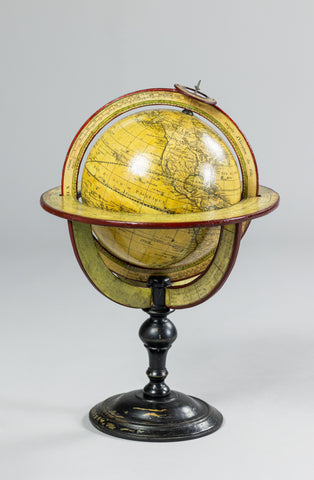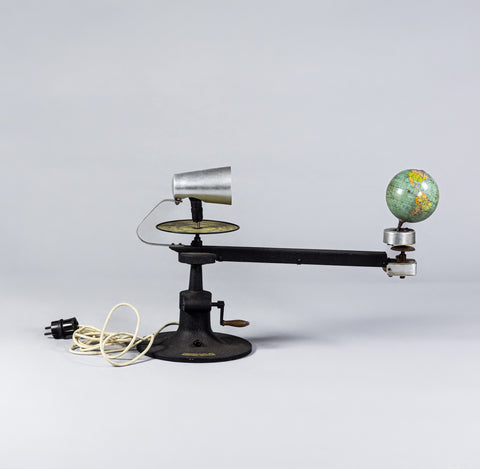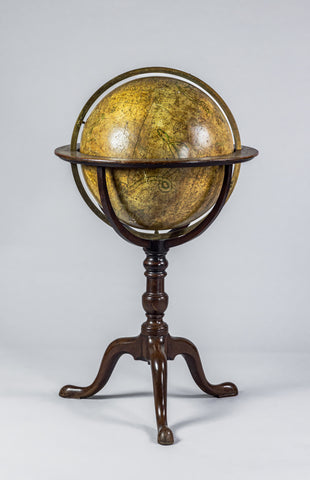![Giuseppe di Rossi (1570 – 1639) [After Jodocus Hondius (1563-1612)], Terrestrial Globe](http://aradergalleries.com/cdn/shop/files/Rossi_TerrestrialGlobe_1615_FullView_large.jpg?v=1683059784)
Giuseppe di Rossi (1570 – 1639) [After Jodocus Hondius (1563-1612)], Terrestrial Globe
Giuseppe di Rossi (1570 – 1639) [After Jodocus Hondius (1563-1612)]
Terrestrial Globe
Rome, 1615
Diameter 8.25 in.; Height 18 in
Terrestrial globe, heavy plaster coated wooden sphere applied with 12 engraved globe gores printed on thick paper, geography copied directly from the Jodocus Hondius 1601 globe, very lightly varnished, paper surface lightly rubbed. The explanatory cartouche set in the Pacific is identical to the Hondius original, and the second dedicatory cartouche by Rossi dedicates the globe to D Paulus Mellinus of Rome. The globe is mounted in an early 18th century wooden Italian-style stand, with a wooden meridian circle with the graticule in manuscript on one face, the horizon circle in hexagonal form, without papers, and with the horizon and turned wooden central support and base all lightly wormed. Lacking south polar metal axis spike.
A fine surviving example of one of the earliest Italian table globes—Rossi’s 8-inch globes being one of the first manufactured globes to be sold in Italy—this terrestrial example was likely assembled in the 18th century from early thick paper gores. Rossi was famous for copying Dutch maps and globes, this globe being a direct copy of the Hondius 1601 globe, presumably copied without permission as Hondius had died 3 years before this globe was issued. These small Rossi globes are very rare; Stevenson records just two examples of the 1615 Rossi globe, both in private hands. One is in the library of Sr. Lessi in Florence and the other in Holland. There is just one celestial in the Astronomical Museum in Rome, and two other terrestrials located in the Correr Museum in Venice and the National Maritime Museum in London.
The globe gores were sold separately by Giuseppe in 1615—as this example on thick paper—and by his grandson Domenico around 1700, reissued on thinner paper. The Rossi family had set up a very successful map and print business in Milan. Their business benefited from the stream of young rich European noblemen who took the Grand Tour of Italy and came to Milan and Rome as part of their education, purchasing art, books and maps as they travelled, to decorate their new grand houses. This globe was likely assembled in the early 18th century and sold to one such nobleman.
We Also Recommend





